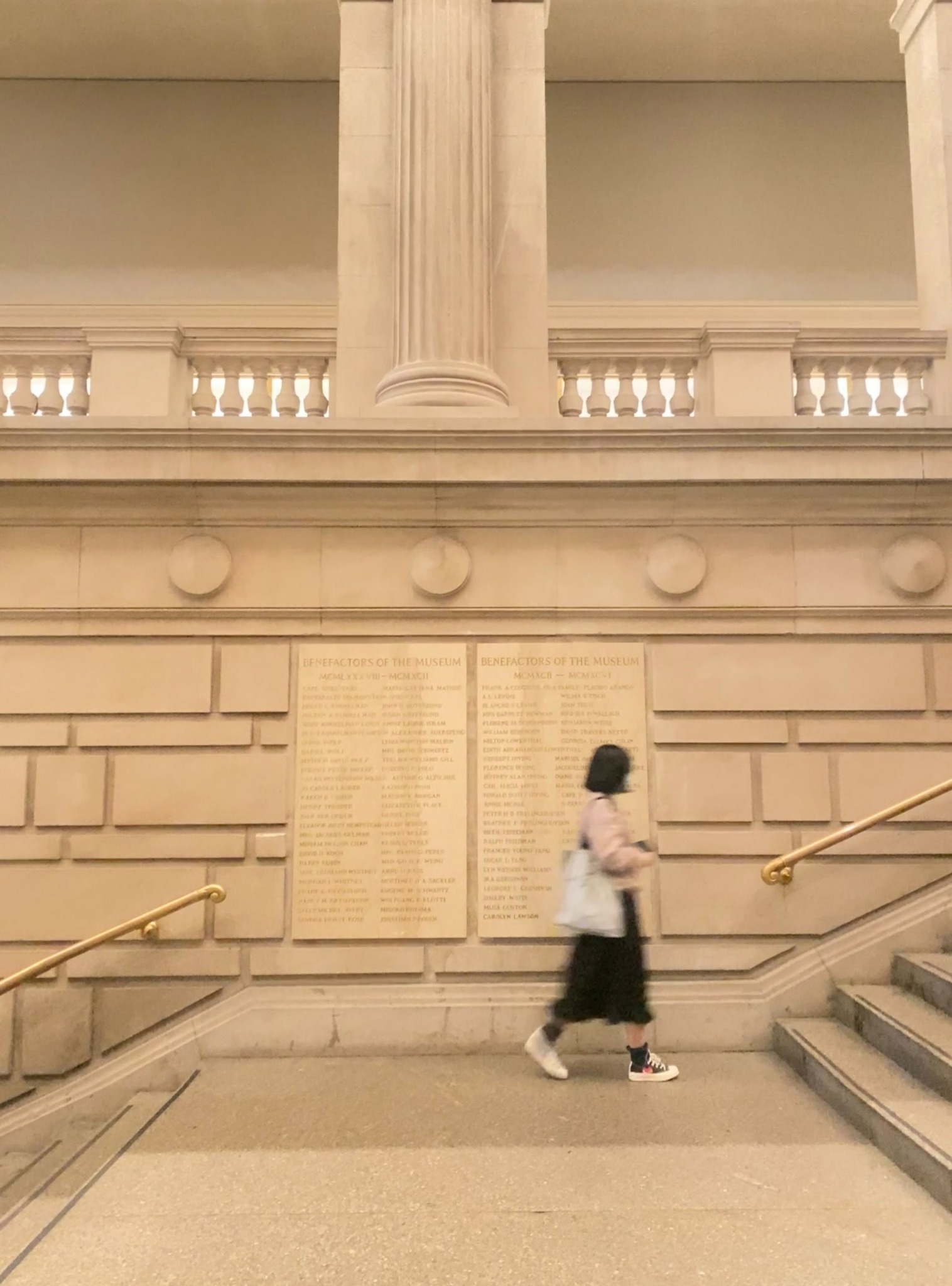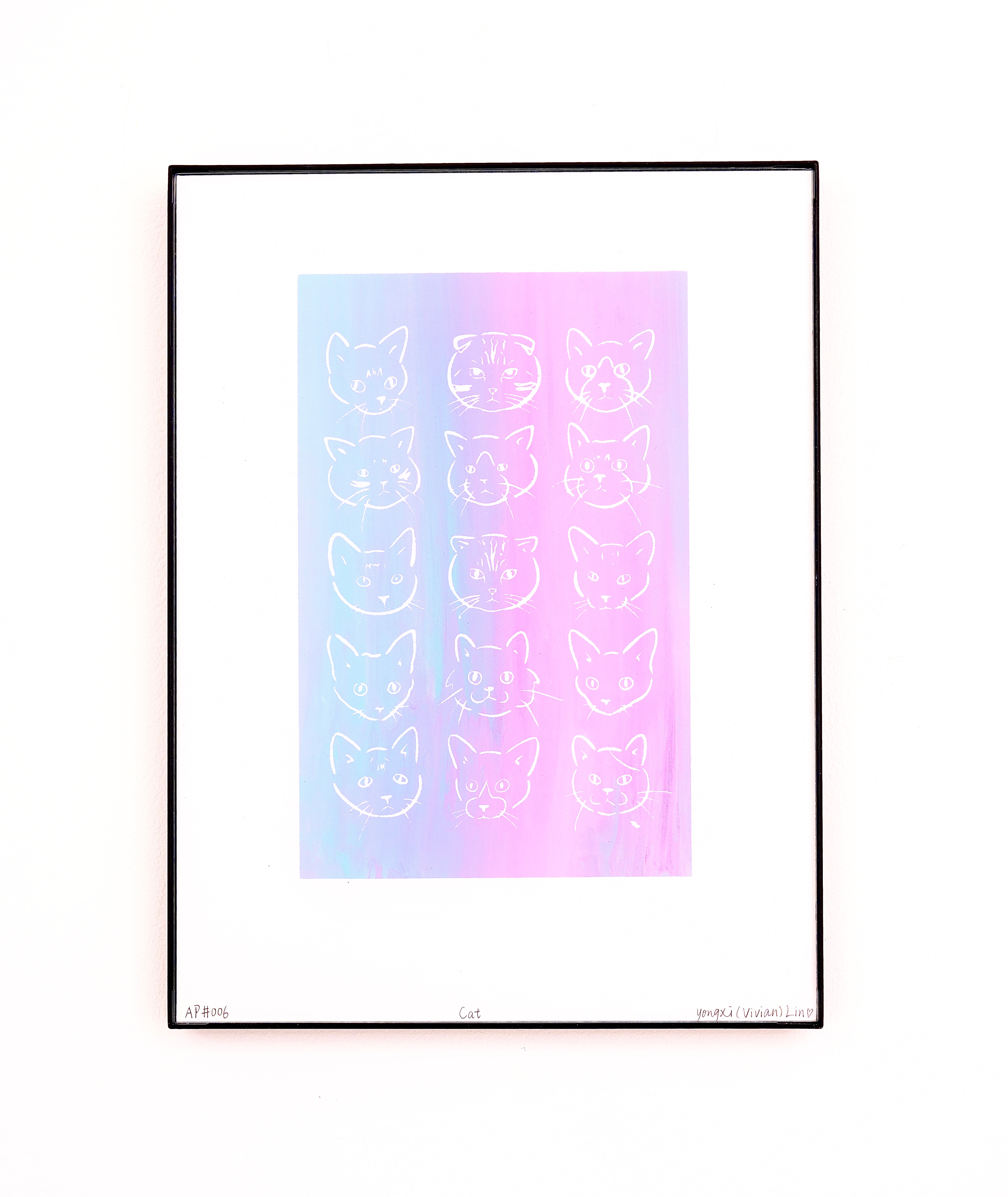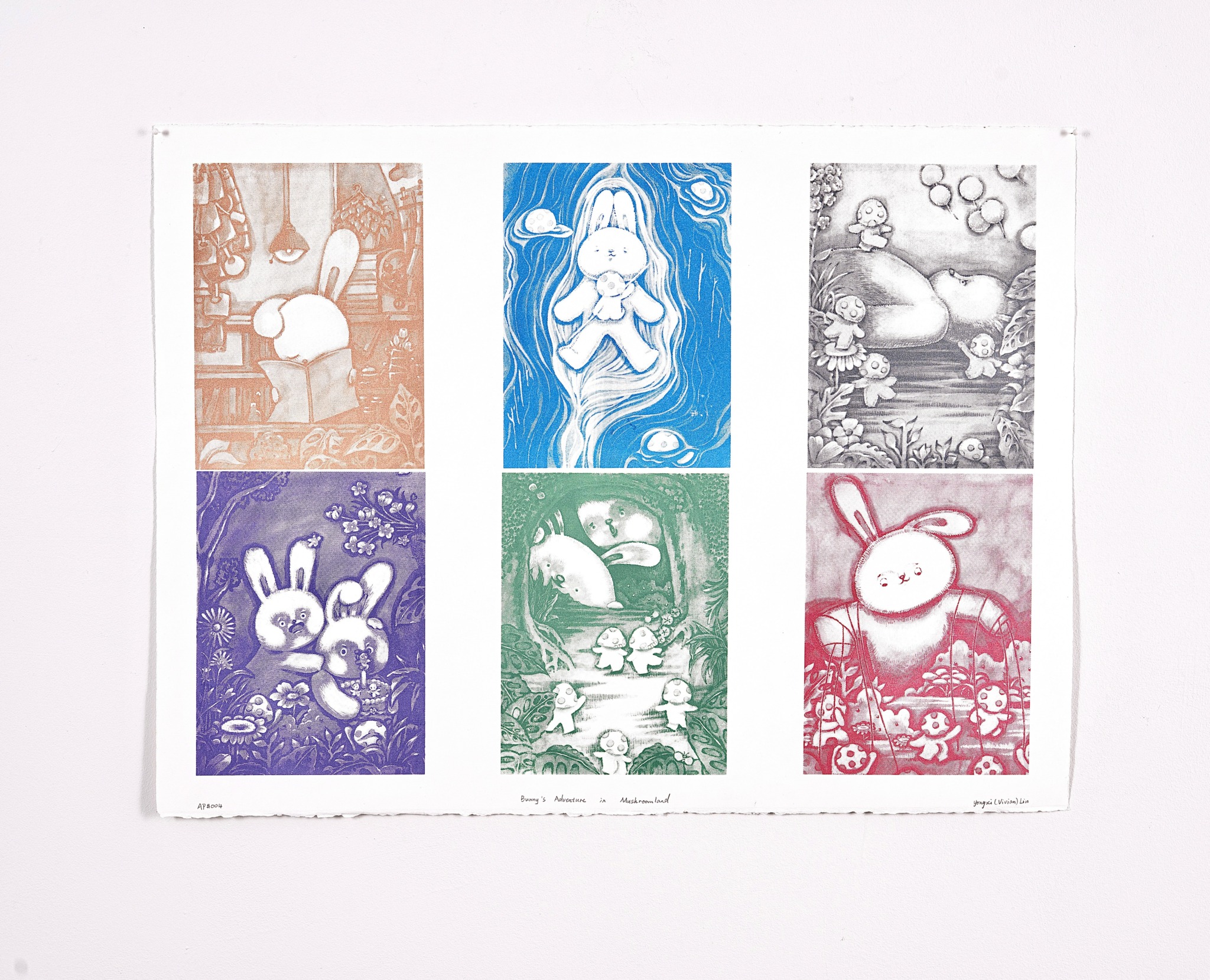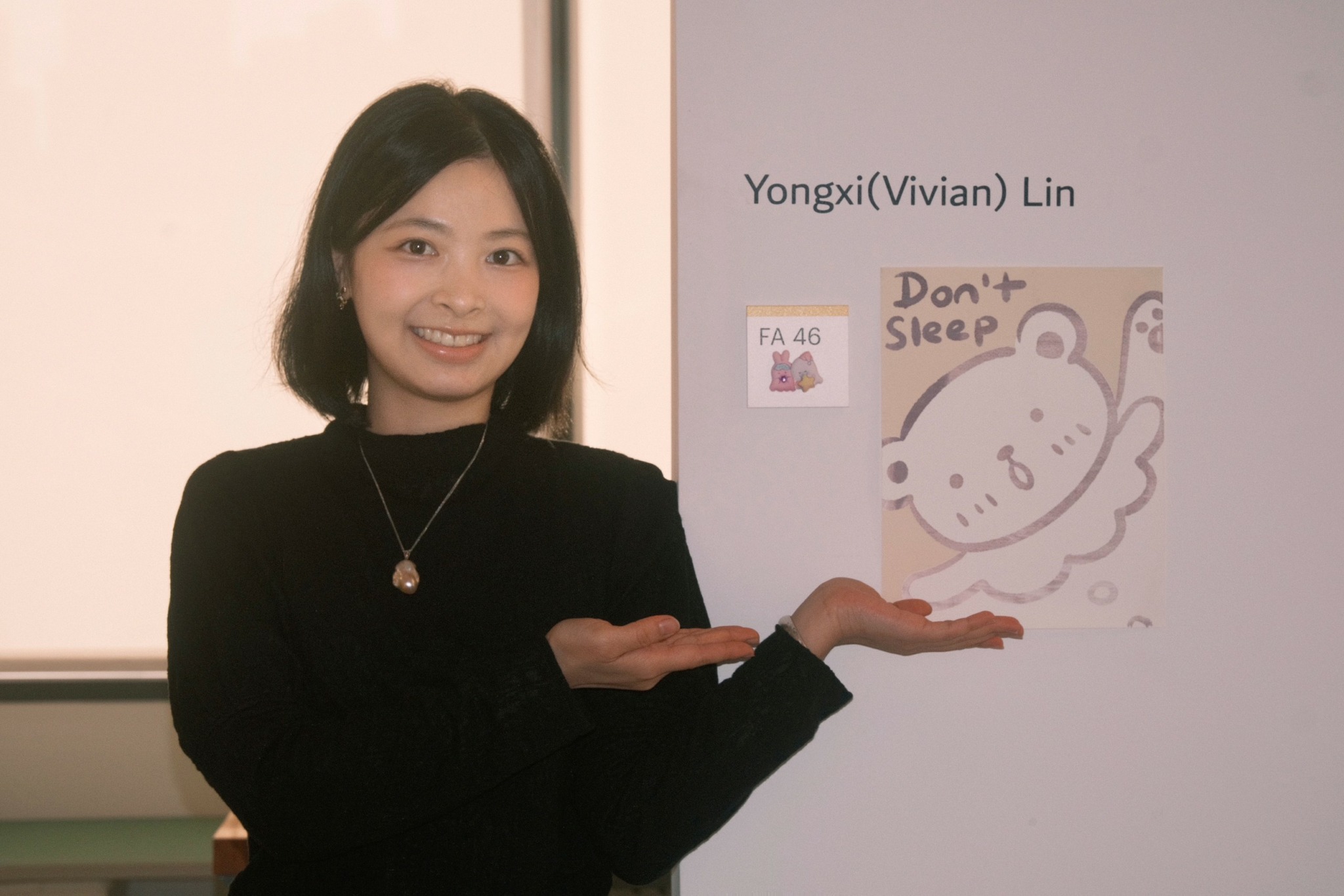Alright – so today we’ve got the honor of introducing you to Yongxi (Vivian) Lin. We think you’ll enjoy our conversation, we’ve shared it below.
Yongxi (Vivian), thanks for joining us, excited to have you contributing your stories and insights. Are you able to earn a full-time living from your creative work? If so, can you walk us through your journey and how you made it happen?
Flower Girls is the most meaningful project I’ve worked on. I completed my undergraduate studies in Illustration, and I am currently studying Printmaking. I love both Illustration and printmaking and want to bring them together. They are illustrations I created before. The original artworks were 7.5×11 inches watercolor and ink paintings. I made them into limited edition two-color screen prints on 9×12 inch white paper while keeping the image size the same at 7.5×11 inches. In the beginning, I wasn’t very familiar with screen printing, so some details were lost in the process. However, as I gained more experience, my technique improved, and you can see the progress reflected in the prints. I never considered reprinting them, as these imperfections are part of what makes the series unique and special.
Flower Girls tells the story of my daily life—from waking up feeling a bit dizzy to being like a droopy leaf before fully waking up, then freshening up and drinking water, followed by getting dressed, enjoying art, and taking breaks. In the eyes of others, I am always seen as a source of positive energy, a cheerful spirit, a little flower growing towards the sun. No one sees my pain, stress, and loneliness. This series of paintings shows some of my hidden emotions and states of mind. Compared to some intense suffering, they might appear less powerful, more slow, and continuous, almost convincing me to ignore them, but they are still real and existing pains. By illustrating these, I want to convey the message of not ignoring your feelings and not feeling ashamed of them. It’s okay to be not okay. Even if life is in black and white, I can still be in color. Whether happy or sad, I can still be the most beautiful flower.


As always, we appreciate you sharing your insights and we’ve got a few more questions for you, but before we get to all of that can you take a minute to introduce yourself and give our readers some of your back background and context?
I would like to talk about the artists who have influenced me based on my growth timeline. When I was little, my mom told me bedtime fairy tales every night and brought me many cartoon DVDs. I was especially drawn to fantasy stories with non-human characters, like The Little Mermaid, Totoro, and the mythical creatures from the Classic of Mountains and Seas. The Classic of Mountains and Seas, full of strange beasts and surreal geography, made me realize how powerful stories and images could be when combined.
In elementary school, I discovered the work of Chinese artist Xia Da. Her illustrations are delicate and poetic, deeply rooted in traditional Chinese aesthetics. She always uses non-human characters, like a comb, a flower, or a rabbit, as the narrator to reinterpret ancient poems and stories. This unique perspective refreshed me and gave me the impulse to “I also want to paint” for the first time. I started creating art then and have continued ever since. Her influence still echoes in my work today, especially my love for telling stories through non-human characters.
In high school, I began visiting museums and galleries regularly. I especially loved the Met and the Whitney Museum. The Met’s vast collection always gave me something new to discover. One section that left a strong impression was the gallery of Claude Monet’s paintings, which showed his work from early to late periods. I was fascinated by his use of color and light, so I started reading about him, studying his biography, and even traveling to Washington D.C. and Boston just to see his exhibitions. Although my own brushwork and style are different from his, I still think about how to bring that sensitivity to color into my own art.
In college, I started forming my own visual language and artistic style. A key figure during this time was Aubrey Beardsley. I first learned about him in an illustration history class and was intrigued because he shared the same name as one of my close friends. At first, I didn’t really like his work; I thought it was too bold and even shocking because of the frequent nudity. But over time, I came to appreciate his flowing lines, detailed designs, and strong black-and-white contrasts. His surreal and poetic imagery reminded me of the storybooks I loved as a child. What started as rejection turned into inspiration, and his influence has since become an important part of my artistic journey.
In my junior year, during the COVID-19 lockdown, I reached a turning point. I wanted to create something light, gentle, and comforting. Naturally, I began thinking about my childhood again—cartoons, fairy tales, and my mother’s stories. I missed my mom a lot, and art became my way of processing those feelings. That’s when I started making children’s illustrations, and I quickly found that it suited me. I really enjoyed the process, and people began to say I had a unique and recognizable style. I took four children’s illustration book classes during my junior and senior years. Among my three professors, David Soman and Peter McCarty had the biggest influence on me. Both are well-known children’s book artists in the U.S., and many of my classmates had grown up reading their books. They not only taught techniques but also showed me how to tell a story through pictures. Even though I’m no longer focused entirely on children’s illustration, their teachings continue to guide my creative work today.
After graduation, I discovered the work of James Jean and Leng Bingchuan. At first, I was drawn to them because their styles reminded me of Aubrey Beardsley and John Austen, but with a distinctly Eastern feeling. James Jean once said he hoped his art could serve as a bridge between cultures, and that really resonated with me. I want my work to do the same. Both James Jean and Leng Bingchuan come from printmaking backgrounds, which opened up a new world for me. Compared to illustration, printmaking and fine art gave me more freedom with materials and techniques. I felt excited again, eager to experiment and grow. It was a breakthrough moment that reignited my passion for creating.
After college, I interned at the studio of Jojo Anavim. By that time, my personal style had started to take shape, and working with Jojo Anavim helped expand it further. He uses bold, vibrant colors and mixes many materials and textures. His art often features childhood objects like ice cream and claw machines, things his parents never let him have when he was a kid. That really struck a chord with me. In my own work, the fairy tales and non-human characters are also reflections of my childhood. At his studio, I learned new techniques like paper transfer, and I began to see the materials themselves as part of the storytelling. Since then, my art has gradually evolved from illustration into a multi-medium practice, becoming a more complete and personal system of expression.
Today, my creative works span from children’s illustrations to fine art prints and narrative-based mixed media. I specialize in crafting emotionally resonant, culturally nuanced imagery that blends Eastern and Western influences. My work is ideal for clients looking for artwork that tells meaningful stories, evokes emotion, and stands out with a unique visual voice.
What sets me apart is my ability to merge personal memory, myth, and fantasy into a hybrid aesthetic that feels both familiar and strange, gentle yet powerful. I often use non-human characters to reflect human emotions, allowing viewers of all ages and backgrounds to find their own stories within mine.
I’m most proud of how my art has stayed true to my emotional roots while evolving into a full, multi-material storytelling language. My mission is to create art that comforts, inspires, and connects, whether that’s through a picture book, an exhibition, or a single illustration that lingers in someone’s memory.


What do you think is the goal or mission that drives your creative journey?
Yes, my mission is to build bridges, between cultures, between childhood and adulthood, and between emotion and imagination. I want my art to be a soft landing place for people, a space where fantasy and memory meet. As someone with roots in both Eastern and Western traditions, I aim to create work that reflects cultural hybridity and emotional depth. Whether through children’s illustrations or mixed-media storytelling, I hope to create spaces where people can feel wonder, comfort, and connection.


What’s the most rewarding aspect of being a creative in your experience?
For me, the most rewarding aspect of being an artist is the ability to create emotional connections through visual storytelling. When someone tells me that my work made them feel comforted, seen, or inspired, that’s the greatest joy. Especially when a viewer connects with a non-human character I’ve created and says, “This reminds me of myself,” I feel like the art has done something quietly magical. I love that my illustrations can speak in ways words can’t, across cultures, languages, and personal experiences. That sense of quiet resonance is what keeps me going.
Contact Info:
- Website: https://vvportfolio.cargo.site
- Instagram: vvportfolio




